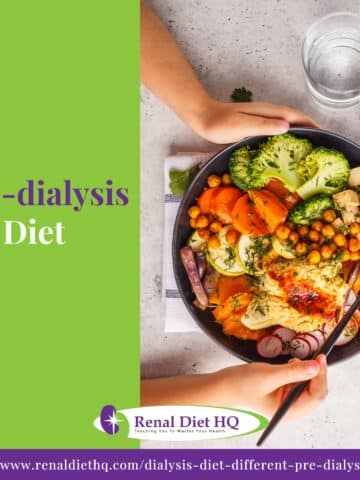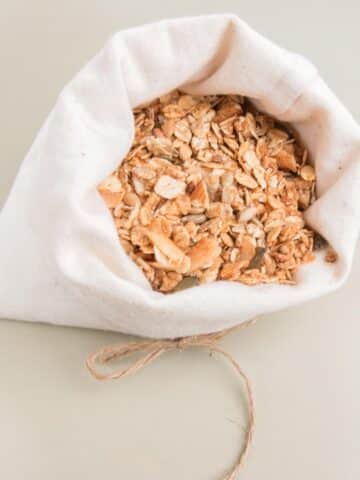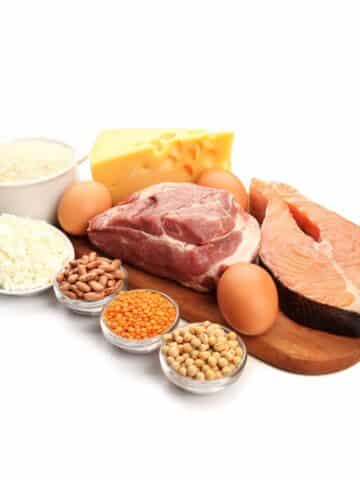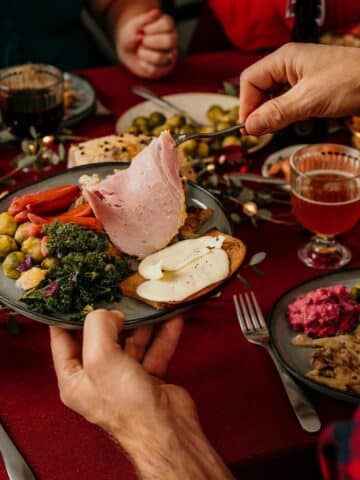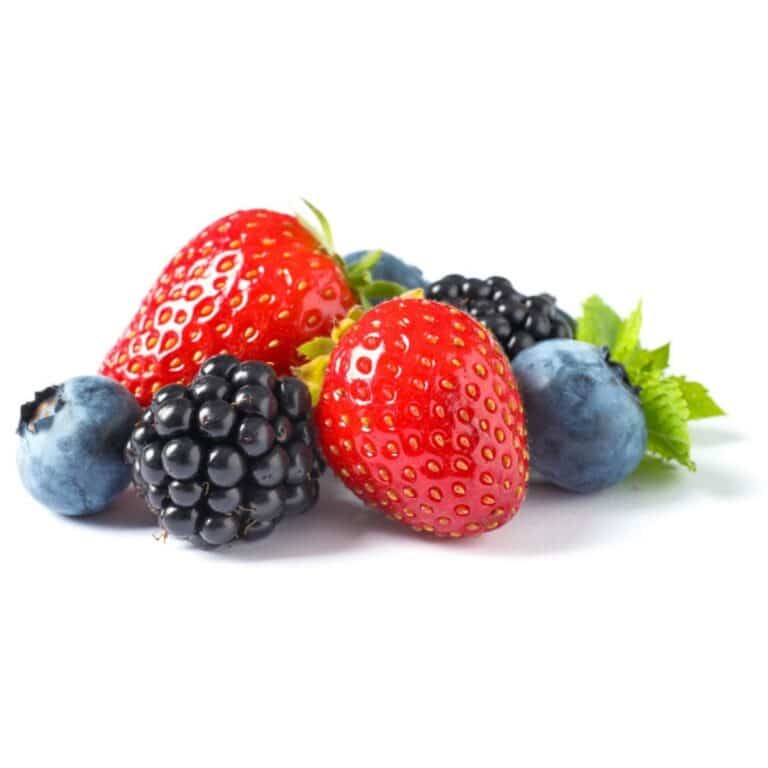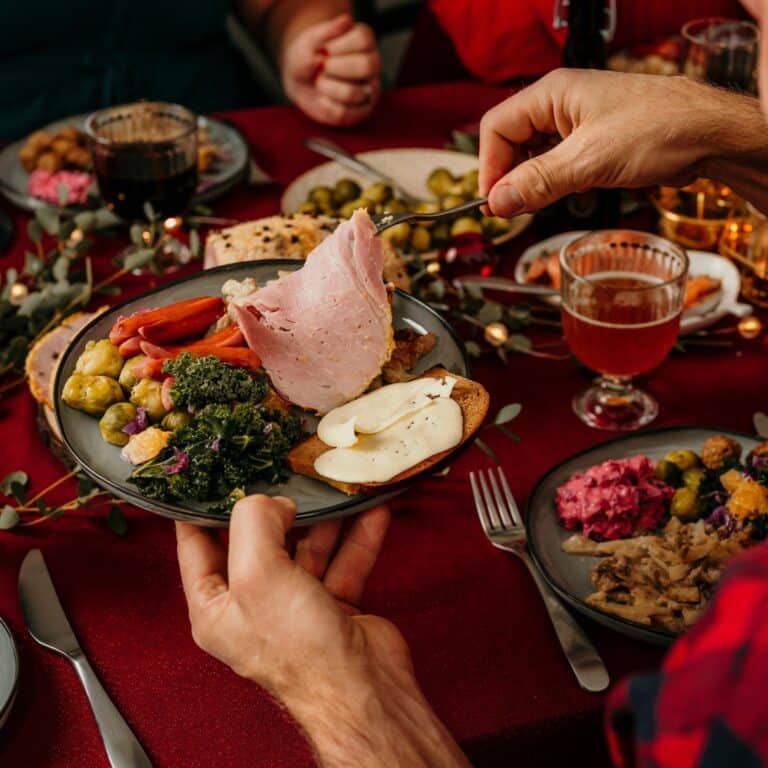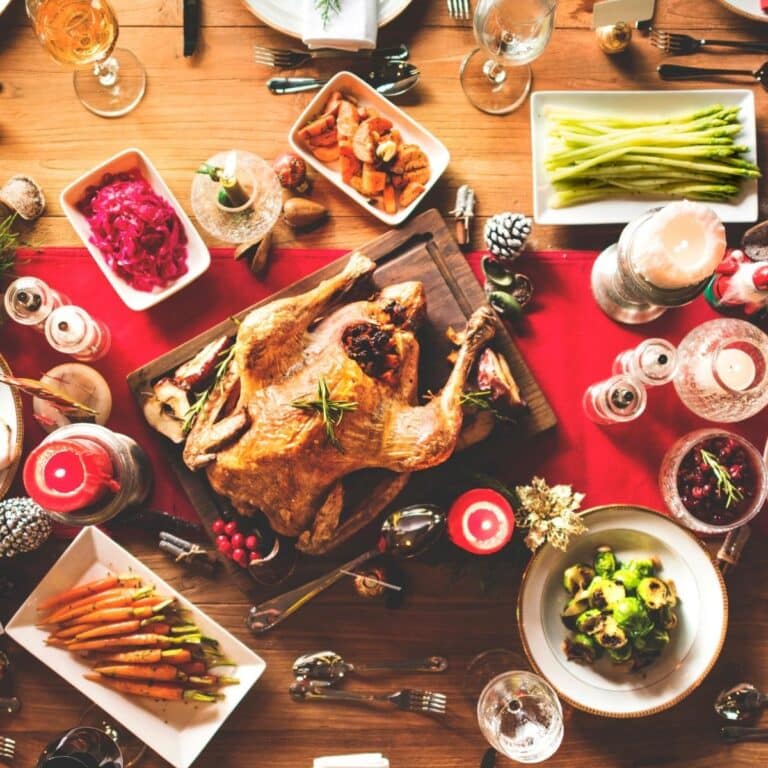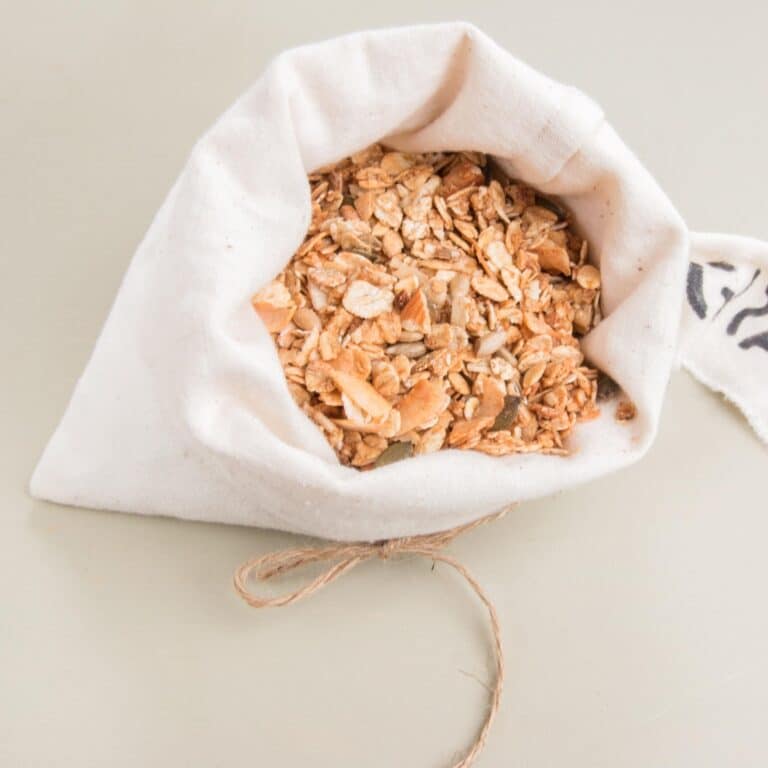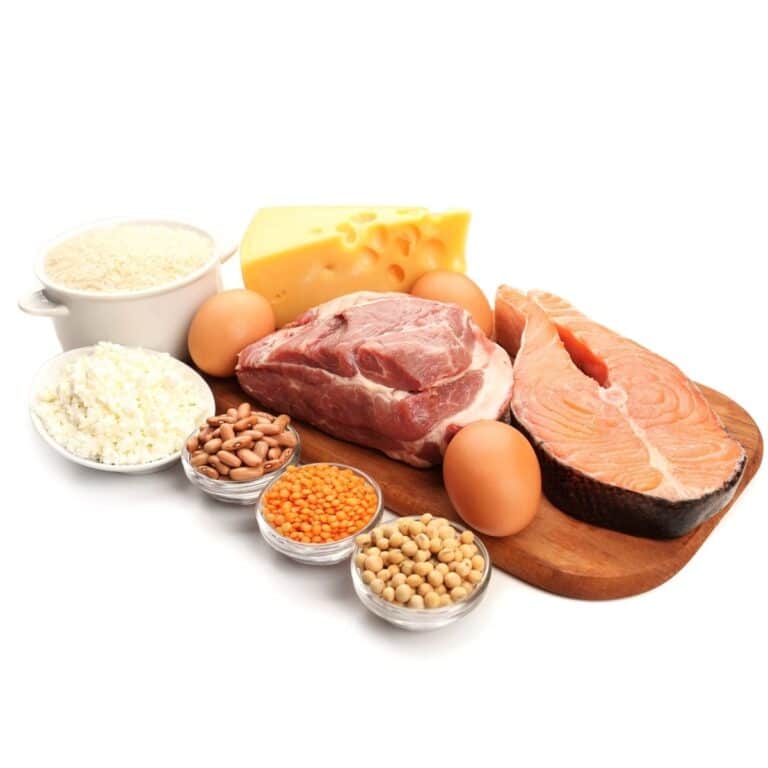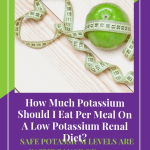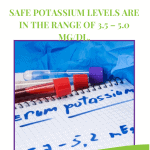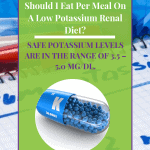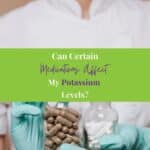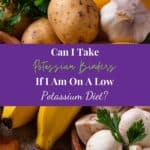Low Potassium Diet
Ever wonder why you're advised to cut bananas and oranges from your renal diet? They're packed with potassium, a mineral essential for health, but potentially dangerous in excess, especially if you have kidney disease.
This article will navigate you through the intricacies of a low-potassium diet, helping you make wise food choices, understand food labels better, and manage your overall health. Let's dive into the world of dietary potassium. You can even check out kidney friendly fruits for a low potassium diet. What happens if your potassium levels are high?
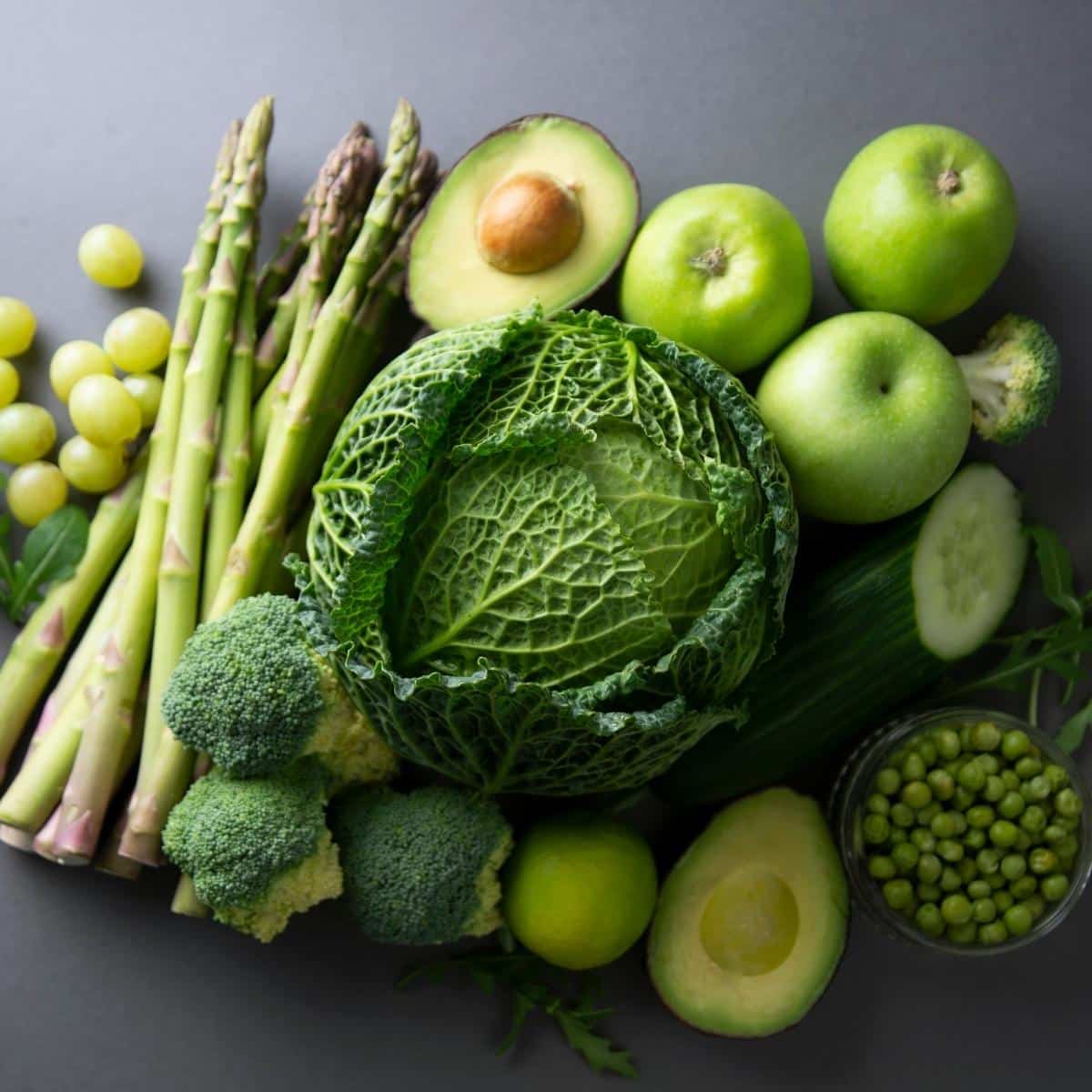
Jump to:
- Key Takeaways
- Understanding the Role of Potassium in Your Renal Diet
- The Impact of High Potassium Levels on Kidney Health
- How Much Potassium Should You Eat on a Renal Diet?
- Choosing Low Potassium Foods for Your Renal Diet
- The Importance of Monitoring Your Potassium Levels
- Tips for Keeping Your Potassium in Check
- Choosing Low Potassium Beverages
- Navigating Dining Out on a Low Potassium Diet
- Frequently Asked Questions
- Enjoy Low-Potassium Food With Your Kidney Diet
Key Takeaways
- Potassium plays a vital role in controlling nerve and muscle function, including the heart muscle, as well as balancing fluid levels, electrolytes, and blood pH levels.
- High potassium levels can be dangerous for individuals with kidney disease, leading to symptoms such as nausea, weakness, numbness, stomach cramping, slow pulse, and irregular heartbeat (can kidney disease cause heart problems?)
- Safe potassium levels range from 3.5 - 5.0 mg/dl, with caution needed at 5.1 - 6.0 mg/dl and dangerous levels measuring 6.0 mg/dl or above.
For More Recipes and Ideas --->> Get Your Free Meals and Recipes That Are Perfect for Pre-Dialysis Diets, Pre-Dialysis with Diabetes, or Dialysis Diets.
Understanding the Role of Potassium in Your Renal Diet
Understanding the role of potassium in your renal diet is crucial for maintaining a healthy balance. This mineral plays an essential role by controlling nerve and muscle function, including that of your heart, as well as balancing fluids.
It's important to note that your kidneys play a vital role in regulating these potassium levels, so kidney disease may lead to dangerously high levels in your system.
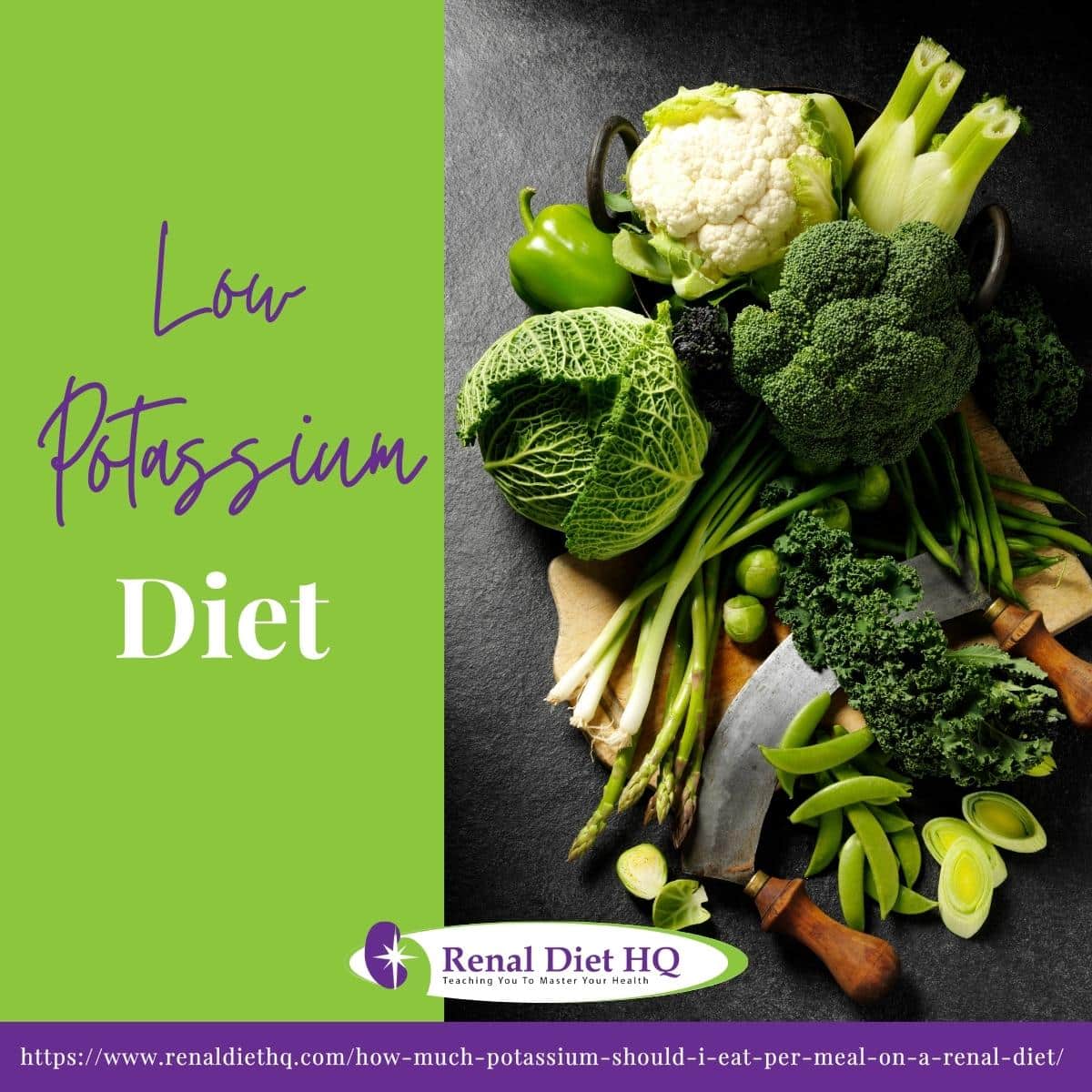
The Function of Potassium in the Body
Potassium plays a crucial role in the body. It controls nerve and muscle function, especially that of the heart muscle.
Potassium is involved in generating electrical impulses that allow nerve cells to communicate with each other and with muscles.
Check out these high potassium foods to avoid. Potassium is also essential for normal muscle function, including the muscles of the heart. It helps regulate muscle contractions, including the contraction of skeletal muscles involved in movement.
Understanding potassium deficiency is vital because low levels can disrupt these critical functions.
The benefits of potassium-rich foods are significant. They help protect us from strokes, osteoporosis, and may even help lower our blood pressure. However, it's important to note that for those with kidney disease, excess intake can be harmful. Therefore, it's essential to balance your diet based on your current health condition.
How Kidneys Regulate Potassium Levels
Your kidneys play a crucial role in regulating the amount of potassium in your body. Through their essential kidney function, they maintain electrolyte balance, including potassium regulation. With normal kidney function, your kidneys filter excess potassium out of your blood and excrete it through urine to keep levels within safe limits.
However, if you have kidney disease or impaired kidney function, this process may not work as effectively and can lead to high potassium levels, also known as hyperkalemia, which can be dangerous. Monitoring and managing hyperkalemia becomes a cornerstone of maintaining good health with renal disease.
Adhering to a special renal diet and discussing any changes in dietary habits with your health care provider are proactive steps towards safeguarding your health.
The Impact of High Potassium Levels on Kidney Health
If you're living with kidney disease, it's critical to understand the impact of high potassium blood levels on your health. Symptoms such as nausea, weakness, and numbness can indicate dangerously high levels of potassium.
Left untreated, this condition can lead to serious complications including heart problems and can also be life threatening.
Symptoms of High Potassium Levels
Managing kidney disease can be challenging, especially when it comes to avoiding the risks of extra potassium.
High potassium levels can cause symptoms like nausea, muscle weakness, numbness, tingling, chest pain, shortness of breath, and heart palpitations. Recognizing these high potassium symptoms is crucial to managing your health when you're living with kidney disease. You can always check out these low potassium recipes.
How Much Potassium Should You Eat on a Renal Diet?
Determining your daily intake of potassium on a renal diet is crucial for maintaining balance in the body and preventing health complications.
The amount of potassium that you should eat per meal on a low potassium renal diet varies according to a number of factors, such your height, weight, and stage of your kidney disease
By understanding these key factors, you can effectively manage your potassium levels, safeguarding against high concentrations that could potentially harm your kidneys and overall health. And there is always a 7 day renal diet meal plan worth checking out!
Managing Your Daily Potassium Intake
The amount of potassium that’s safe for you to eat depends on what stage of kidney disease you have and what your potassium level is.
If you're following a low potassium renal diet, you'll need to know your daily allowance of potassium. Understanding food labels is crucial for managing your intake.
The dietary guideline for adults without kidney disease is 3,500-4,700 milligrams of potassium per day. If a low potassium renal diet is recommended, that’s generally 2000-3000 milligrams per day.
While on a low-potassium diet, you should avoid or limit high-potassium foods that can contribute to elevated potassium levels. These include bananas, oranges, white potato, sweet potato, tomatoes, avocados, spinach, beets, and dried fruits.
Opt for low-potassium foods to keep your intake within the recommended limits. Examples of low-potassium foods include apples, strawberries, grapes, cabbage, cauliflower, cucumbers, green beans, lettuce, onions, peppers, and zucchini.
People who are in stage 5 CKD (end stage renal disease) need a kidney transplant or regular dialysis treatments, which removes excess fluids and excess minerals like potassium from their systems. And yes, there are tips to avoid end stage renal disease.
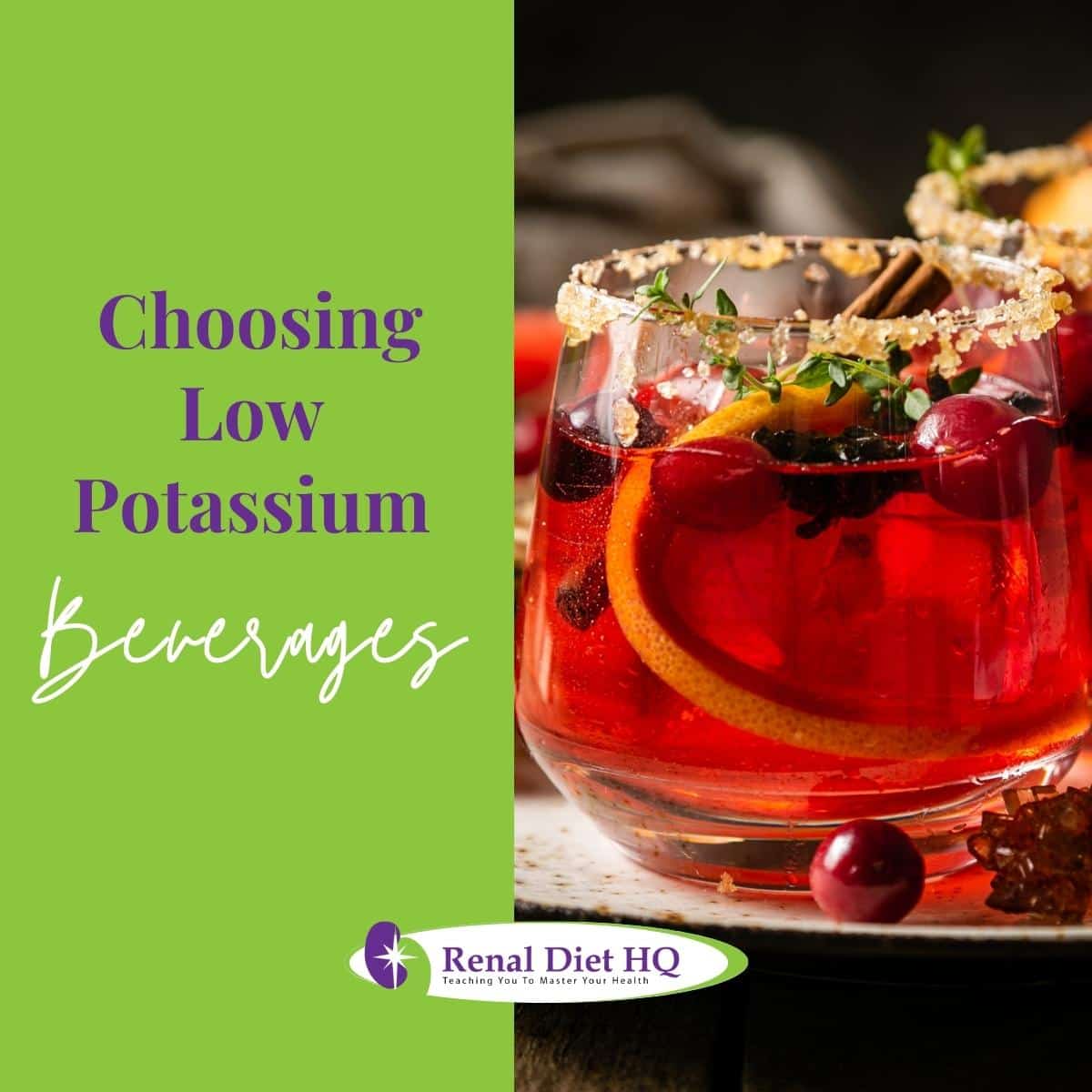
Tips To Lower Your Potassium Intake
To maintain safe potassium levels:
- Always monitor your potassium levels closely through regular blood tests as regular monitoring helps in timely interventions and adjustments in your diet based on current levels.
- Practice leaching vegetables before eating them to reduce their potassium content.
- Make reading food labels a habit to avoid hidden sources of potassium in packaged foods.
- Be mindful when dining out on a low-potassium diet - not all restaurants consider dietary restrictions.
- Limit consumption of high-potassium foods such as bananas and potatoes.
- Keep an eye on portion sizes - even low-potassium food can cause trouble when eaten in excess.
Adhering to these guidelines can help manage your condition and contribute positively to those around you.
Your commitment towards careful monitoring and dietary adjustments can greatly reduce the risks associated with hyperkalemia. Learning how to manage chronic kidney disease is one of the best things you can do for yourself!
Choosing Low Potassium Foods for Your Renal Diet
When managing your renal diet, it's essential to select low potassium foods that support your kidney health (low carb low potassium foods).
Apples, grapes, cucumbers, and onions are excellent choices due to their lower potassium content.
Additionally, starch options like rice, noodles, and green beans can be a valuable part of your diet plan; they aren't just satisfying but also help in maintaining safe normal levels of potassium.
Low Potassium Fruits
Incorporating low-potassium fruits such as apples, peaches, grapes, pears, watermelon, cranberries, and strawberries (are strawberries kidney friendly?) into your diet can help you maintain low potassium levels. These are great low potassium snack ideas that not only support kidney function but also offer other health benefits.
- Apples: A versatile low-potassium fruit that can be added to salads or made into a healthy dessert.
- Grapes: Perfect for a quick snack or as part of a refreshing salad.
- Pears: Delicious when eaten fresh or incorporated into main meals.
The benefits of a low potassium diet extend beyond supporting renal health; it also helps mitigate potential impacts of high potassium on heart health. Regularly incorporating these foods into your meals will promote overall wellness while keeping your potassium in check.
Low Potassium Vegetables
When following a renal diet, it's important to include low-potassium vegetables that provide essential nutrients while keeping potassium levels in check.
Here are some of the best low-potassium vegetables that you can include in your renal diet:
- Cauliflower is a versatile vegetable that can be used in various recipes. It is low in potassium and can be a good substitute for high-potassium vegetables like potatoes.
- Cabbage is a kidney-friendly vegetable that is low in potassium. It is also rich in vitamin C, fiber, and other beneficial compounds.
- Bell peppers, particularly the green variety, are low in potassium and can be added to salads, stir-fries, or stuffed with other kidney-friendly ingredients.
- Zucchini is a summer squash that is low in potassium. It can be used in various dishes, including soups, stews, and stir-fries.
- Onions: Onions are a flavorful vegetable that is low in potassium. They can be used as a base for many dishes and add flavor without significantly increasing potassium levels.
Remember that portion control also plays a role in managing potassium intake, even when comes to low-potassium foods.
It's always a good idea to consult with a registered dietitian or healthcare professional who can provide personalized dietary recommendations based on your specific needs and medical condition
Low Potassium Starch Options
You can easily manage your renal health by choosing starches like rice, noodles, and low potassium cereals that are beneficial for maintaining safe potassium levels. Opting for low potassium grains such as white rice and wild rice helps keep your diet balanced without raising potassium levels dangerously.
Low potassium pasta varieties, including white and whole wheat types, also align well with a kidney-friendly diet.
Similarly, opt for low potassium cereals - many oat and rice-based options fit the bill. Ultimately, careful selection of these staple foods is key to successfully managing a low-potassium renal diet.
The Importance of Monitoring Your Potassium Levels
Keeping a close eye on your potassium levels is crucial when you're dealing with kidney disease. Regular testing allows for timely adjustments to your diet, ensuring that you stay within safe potassium limits and maintain optimal health. Make sure you know of the Diet Changes by Stage of Chronic Kidney Disease.
Remember, how much or how little potassium you need isn't one-size-fits-all; it's determined by the stage of your kidney disease and other factors, so regular check-ups are key in managing your condition effectively.
Regular Testing for Potassium Levels
It's vital to have your potassium levels checked regularly when on a low potassium renal diet. Regular testing is the key to monitor your progress and ensure that you're maintaining a safe balance of this crucial mineral.
Blood potassium levels are categorized into three ranges: the safe zone, the caution zone, and the danger zone.
The safe range for blood potassium levels in adults is typically between 3.5 to 5.0 mmol/L.
The caution zone extends from 5.1 to 6.0 mmol/L.
Finally, the danger zone encompasses potassium levels that are 6.0 mmol/L or above.
It is crucial for people with kidney disease to be aware of their blood potassium levels and consult with healthcare professionals. This is to ensure appropriate management and prevention of complications associated with imbalances in potassium levels.
By monitoring potassium, it helps you in adjusting your diet accordingly based on the results. If your levels are too high or too low, you can make necessary changes to your meal plans. There is food safety for people with kidney disease that should be paid attention to!
Tips for Keeping Your Potassium in Check
As you navigate your renal diet, there are some key strategies to help keep your potassium levels in check.
Are bananas bad for kidney disease? One important step is limiting high potassium foods like bananas, oranges, and tomatoes.
Additionally, leaching vegetables that contain high amounts of potassium can be an effective way to reduce its content while still enjoying these nutritious foods.
Understanding food label reading becomes an essential skill while managing your potassium intake. Many processed foods contain hidden sources of potassium which could disrupt the equilibrium.
Limiting High Potassium Foods
You'll need to cut back on high potassium foods like bananas, oranges, potatoes, tomatoes, and avocados to manage your potassium levels effectively.
Here are some simple steps you can follow:
- Explore low potassium meal ideas: Opt for fruits such as apples or cranberries and vegetables like beans or cucumbers. Try this black bean and rice burrito recipe.
- Identify potassium-rich foods to avoid: Be cautious of items with added potassium chloride like 'low salt' products.
- Dairy substitutes: Keep serving sizes small and limit intake of dairy products. Opt for non-dairy milk products like almond milk and rice milk as they contain less potassium.
Remember that certain medications can interact with dietary potassium too. Always consult with your healthcare provider while planning your diet to ensure a healthy balance of nutrients.
Leaching Vegetables
Leaching, a cooking method that helps reduce the amount of potassium in certain vegetables, can be a useful technique for those on a renal diet. It's an effective way to enjoy your favorite potassium-rich vegetables while maintaining safe levels.
The process of leaching involves soaking and boiling the vegetables in water to draw out some of their potassium content.
Here is how you can leach vegetables with high potassium:
- Prepare the vegetables: Wash the vegetables thoroughly under running water to remove any dirt or debris. Peel the vegetables if desired, as unpeeled vegetables can contain more potassium.
- Cut the vegetables: Cut the vegetables into small pieces that are ⅛ inch thick
- Rinse the vegetables: Place the cut vegetables in a large bowl or colander. Rinse them with warm water for a few seconds.
- Soak the vegetables: Fill a large pot or bowl with warm unsalted water using ten times water amount to vegetable amount. Add the vegetables to the water and let them soak for at least two hours.
- Drain and rinse: After the soaking period, drain the water from the vegetables and rinse them again using warm water.
- Cook the vegetables: You can now proceed to cook the vegetables according to your desired recipe. You'd be surprised as to how easy leaching vegetables is!
Remember, these dietary modifications are part of broader strategies aimed at reducing potassium levels. You should always consult with your kidney dietitian concerning appropriate cooking methods and dietary changes for regulating your potassium intake and managing kidney health.
How to Read Food Labels for Potassium
It's crucial to understand how to read labels carefully as a kidney patient, particularly when you're trying to manage your levels on a low potassium renal diet. Deciphering potassium labels can seem daunting, but with a bit of understanding and practice, it can become second nature.
- Start with the serving size: The serving size listed on the food label is the reference amount for which the nutrient values are provided. Make sure to note the serving size as it will help you determine the potassium content accurately based on the amount you consume.
- Identify the potassium content: Look for the "Potassium" line under the "Nutrition Facts" panel. The potassium content is usually listed in milligrams (mg). Keep in mind that the potassium values indicated are for the specified serving size.
- Understand low-potassium guidelines: While there are no specific cutoffs universally agreed upon for "low-potassium" foods, the National Kidney Foundation considers foods with less than 200 mg of potassium per serving as lower-potassium options. However, this can vary based on individual dietary restrictions and your specific needs.
Remember, consulting with a registered dietitian who specializes in renal nutrition is highly recommended. They can provide personalized guidance, help interpret food labels, and assist you in developing a suitable meal plan to manage your potassium intake effectively based on your specific needs and stage of kidney disease.
With the right knowledge, you can make informed choices about what you eat, helping maintain safe levels of this mineral in your body and manage your kidney health effectively.
Beware of Hidden Sources of Potassium
You've got to be cautious of hidden sources of potassium in your meals, even when you're diligently following a renal diet.
Some foods may seem innocuous but contain potassium-rich ingredients that can spike your levels unexpectedly.
Beware of seasonings and condiments. While they enhance flavor, some have high potassium content. Certain salt substitutes and seasonings use potassium chloride, which can be more harmful than salt.
Similarly, don't overlook beverages like milk or certain fruit juices like grapefruit juice and orange juice; these can be loaded with potassium too.
Lastly, processed foods often have potassium additives for preservation, like potassium sorbate. Even the innocent-looking canned fruits and vegetables can be a risk.
By being mindful about these hidden sources, you'll keep your levels in check while enjoying tasty meals safely.
Choosing Low Potassium Beverages
If you have early kidney disease, you should generally aim to drink around 64 ounces or 8 glasses of fluids throughout the day to stay hydrated. However, if you are diagnosed with advanced kidney disease, you may have to limit your fluid intake to avoid fluid retention.
Managing potassium intake is crucial for individuals with chronic kidney disease, and this extends to beverages as well. When it comes to quenching your thirst, there are a number of drink options that can help keep your potassium levels in check.
Water is the best choice for hydration, as it is free of potassium. It supports kidney function by helping your kidneys clear wastes from your blood.
For a flavor boost, consider fruit-infused water. Infusing water with slices of low-potassium fruits, such as strawberries or peaches, can add a hint of flavor without significantly increasing potassium content. This can be a great way to enhance the taste of water and stay hydrated.
Cranberry juice is low in potassium and can be a suitable choice for individuals with CKD. However, it's essential to pick products without potassium additives.
Many herbal teas, such as chamomile, peppermint, or ginger tea, are suitable for kidney patients in moderation. These can be enjoyed hot or cold and can provide a flavorful and refreshing alternative to other beverages.
By choosing alternatives to high-potassium drinks, you'll take an essential step towards maintaining safe potassium levels.
Navigating Dining Out on a Low Potassium Diet
When dining out, it's crucial to navigate your meal choices wisely to maintain a low potassium diet. Always ask for nutritional information at restaurants in order to be aware of the potassium content in various dishes.
This empowers you to make informed decisions and opt for low potassium choices, ensuring that your diet supports your steps to improving kidney health.
Asking for Nutritional Information at Restaurants
You've got to remember to ask for nutritional information at restaurants, as many foods and meals might contain high levels of potassium. Your nutrition education becomes a vital tool in these situations, helping you identify low potassium options.
When communicating with restaurant staff, be clear about your dining restrictions due to kidney disease. Ask for menu modifications if needed - chefs can often prepare dishes with fewer high-potassium ingredients or use different cooking methods like leaching vegetables.
Don't hesitate to discuss your needs; most establishments are happy to accommodate dietary restrictions (renal diet restrictions) when possible.
Remember, maintaining a low potassium diet while dining out is doable with the right knowledge and communication strategies. Stay proactive in managing your health, even on a night out!
Making Low Potassium Choices When Eating Out
It's absolutely possible to enjoy dining out with kidney disease while still making smart choices that align with your renal diet.
When considering dining out options, restaurant menu selection is key in making low potassium choices. Take a moment to review the menu thoroughly before ordering, and don't hesitate to ask the waiter about ingredients or preparation methods if you're unsure.
Choose side salads or steamed vegetables from the low-potassium list instead of fries or baked potatoes.
Implement these eating out strategies regularly, and you'll find it easier to maintain low potassium meals even when not cooking at home. Remember, managing your health doesn't have to mean sacrificing enjoyable experiences.
Frequently Asked Questions
In kidney patients, potassium intake that's lower than the recommended can lead to potassium deficiency, which is also known as hypokalemia. Hypokalemia can trigger many noteworthy symptoms that include muscle weakness, cramping, abnormal heart rhythms, and fatigue.
Remember, prevention is crucial: maintain a balanced diet and monitor your potassium intake regularly to keep your potassium level stable.
If you're experiencing effects of low potassium in the body, it's advisable to discuss potassium supplementation options with a healthcare professional.
Yes, certain medications can indeed impact your potassium levels. Common types include diuretics, blood pressure drugs, and some antibiotics. These can increase potassium in your body, potentially complicating your kidney condition.
It's crucial to manage medication appropriately and be aware of these potential interactions. Always discuss any concerns with your healthcare provider to ensure safe and effective treatment strategies that align with your overall health goals.
Potassium is an essential mineral that's important for adequate muscle and nerve functions and helps regulate your heartbeats (exercise for healthy heart).
Insufficient potassium may lead to muscle weakness, fatigue, and even heart problems.
Making changes to your diet can help regulate its levels, ensuring harmony within your body and promoting energy.
Potassium binders work by binding to potassium in the bowels to help remove it from the body.
It's important not to take potassium binders without discussing it first with your doctor who is monitoring your potassium levels and diet. They can best determine if binders are warranted given your unique condition and adherence to the diet
Healthcare professionals typically prescribe potassium binders only if changes to diet and other treatment options don't work.
Enjoy Low-Potassium Food With Your Kidney Diet
Maintaining a balanced diet is an essential part of managing your kidney condition.
As with everything related to your kidney disease, your situation is unique, you’re not alone, and there’s a lot you can control.
By working closely with your doctor and your renal dietician, you can keep tabs on your potassium level and take needed steps to keep that important number within normal range.
And now we have a new book on Amazon - look into our Pre Dialysis Diet Book.

